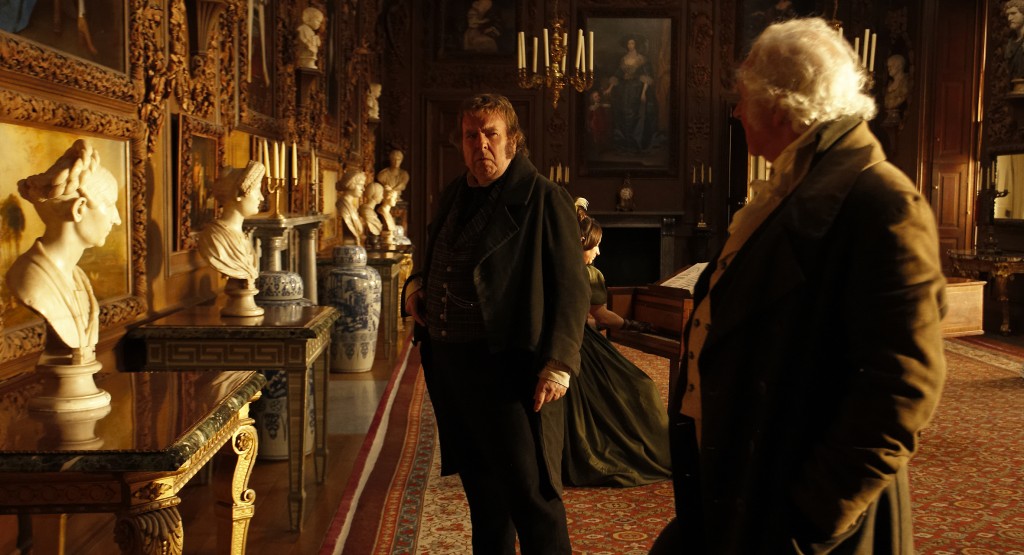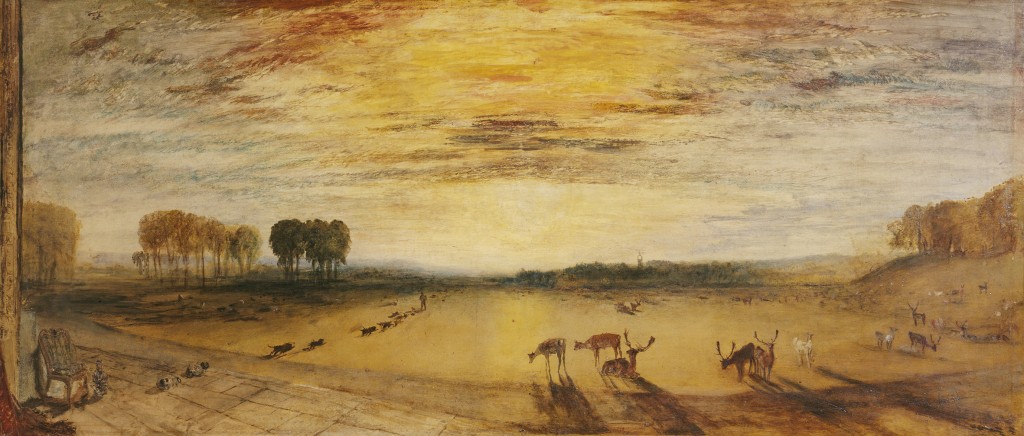
This week I am returning to Petworth House to revisit Mr. Turner – an exhibition, which explores some of the central themes of director Mike Leigh’s remarkable film Mr. Turner. The exhibition adds depth and context to Turner’s relationships, his restless travelling, his interest in natural philosophy and his many visits to Petworth House.
It has often been said that the character of Turner’s enigmatic and enlightened host, George O’Brien Wyndham, 3rd Earl of Egremont (1751-1837), informed the artist’s time at Petworth. Certainly, his relationship with Egremont is recorded as being particularly warm, especially in the decade before the Earl’s death.
The 3rd Earl’s independent thought and patronage gave opportunity for artists to develop their talent, qualities described by the Royal Academician George Jones as being profoundly important to the development of English art.
This independent, enlightened and philanthropic landowner was an expert agriculturalist and horticulturalist, an amateur scientist and a breeder of livestock and racehorses. The Agricultural Depression began with the end of the Napoleonic Wars in 1815 and lasted until 1836. Crushing taxation connected with the post-war national debt, a glut of workers returning from military service and the subsequent collapse in prices came with heavy social and economic costs. The depression’s severity brought financial ruin upon landlords and tenant farmers alike. During this period the 3rd Earl planted different crops, fed and clothed the destitute and provided employment on a mass scale.

The Carved Room at Petworth House, sometimes called the Long Dining Room, was created by the 3rd Earl from two rooms. It housed the remarkable Grinling Gibbons carvings and work by the famous carver’s Sussex contemporary, John Selden. The room would have appeared very much as it does today, although the panelling was papered and painted white. Lord Egremont held his dogs in great affection and it was in this room that he would feed them at breakfast before setting out each day to hunt and shoot, even in his seventies.
In the 1820s Turner painted four landscapes for this splendidly ornamented dining room. They are quite extraordinary, combining Turner’s strength and energy with the culmination of over thirty years of experience. They capture more than just the Earl’s possessions. The patron’s philanthropic investment in agriculture, industry and the Sussex economy are brought to the fore, diverting our attention as viewers from status alone. One of them, for example, is a pastoral scene with local people playing cricket in Petworth Park amongst an unusual, diverse array of breeds, illustrating the Earl’s generosity and his innovative approach to farming.

However, it is a preliminary sketch of the same landscape, titled Petworth Park with Lord Egremont and his dogs, which captures my eye. Here we watch Lord Egremont as though from the Long Dining Room. He strikes out walking confidently across the sunlit sward with his dogs, bathed in luminous light, as a herd of deer grazes and looks on. The horizon is marked by the Sussex Downs and a copse broken by the distinctive spire of Tillington Church. Painted in 1828, this intimate picture provides a particular insight into the personal passions and delights of this enlightened patron. There is a spontaneity reflective of these two remarkable men’s good-humoured bonhomie. Turner’s friendship with the 3rd Earl of Egremont was such that he described his patron’s death as his “loss at Petworth”.
Mr. Turner – an exhibition illuminates the life and work of this great artist with many rarely seen works and personal objects on display. Demand for tickets has been high, so I recommend you book yours as soon as possible. The exhibition runs at Petworth House until 11th March 2015. For more information and to book tickets go to www.nationaltrust.org.uk/petworth-house or telephone 0844 249 1895.
By Revd. Rupert Toovey. Originally published on 11th February 2015 in the West Sussex Gazette.